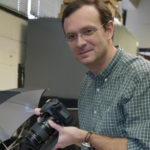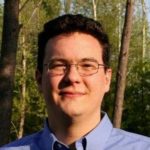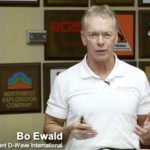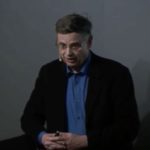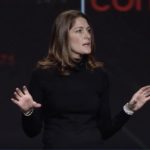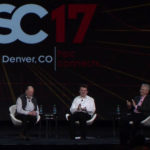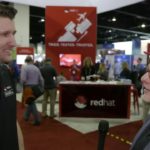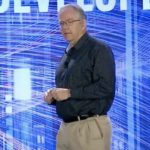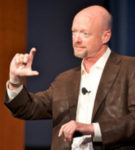Jason Bond from Auburn University gave this talk at SC17 in Denver. “The Tree of Life Web Project (ToL) is a collaborative effort of biologists and nature enthusiasts from around the world. On more than 10,000 World Wide Web pages, the project provides information about biodiversity, the characteristics of different groups of organisms, and their evolutionary history (phylogeny).”
High Performance Inferencing with TensorRT
Chris Gottbrath from NVIDIA gave this talk at SC17 in Denver. “This talk will introduce the TensorRT Programmable Inference Accelerator which enables high throughput and low latency inference on clusters with NVIDIA V100, P100, P4 or P40 GPUs. TensorRT is both an optimizer and runtime – users provide a trained neural network and can easily creating highly efficient inference engines that can be incorporated into larger applications and services.”
Video: D-Wave Systems Seminar on Quantum Computing from SC17
In this video from SC17 in Denver, Bo Ewald from D-Wave Systems hosts a Quantum Computing Seminar. “We will discuss quantum computing, the D-Wave 2000Q system and software, the growing software ecosystem, an overview of some user projects, and how quantum computing can be applied to problems in optimization, machine learning, cyber security, and sampling.”
Building a GPU-enabled and Performance-portable Global Cloud-resolving Atmospheric Model
Richard Loft from NCAR gave this talk at the NVIDIA booth at SC17. “The objectives of NCAR’s exploration of accelerator architectures for high performance computing in recent years has been to 1) speed up the rate of code optimization and porting and 2) understand how to achieve performance portability on codes in the most economical and affordable way.
Video: Molecular Simulation at the Mesoscale
Dr. Rommie E. Amaro gave this talk at SC17. “We are developing new capabilities for multi-scale dynamic simulations that cross spatial scales from the molecular (angstrom) to cellular ultrastructure (near micron), and temporal scales from the picoseconds of macromolecular dynamics to the physiologically important time scales of organelles and cells (milliseconds to seconds).”
Video: The TOP500 Past, Present, and Future
In this video from SC17, Jack Dongarra, Erich Strohmaier, and Horst Simon give an Invited Talk on the history of the TOP500 list. “The TOP500 list has served as the defining yardstick for supercomputing performance since 1993. We briefly describe the project’s origins, the principles guiding data collection, and what has made the list so successful during the 25 year long transition from giga- to tera- to petascale computing. We also examine the list’s limitations.”
Gravitational Waves: The Role of Computing in Opening a New Field of Astronomy
Dr. Joshua L. Willis from the California Institute of Technology and Dan Stanzione from TACC gave this talk at the Intel HPC Developer Conference. “These discoveries mark the beginning of gravitational wave astronomy, and in this talk we will highlight what we have learned and hope to learn in this new field, pointing out many of the ways in which high-throughput and high-performance computing have been essential to its progress.”
Red Hat steps up to POWER9 for HPC
In this video from SC17 in Denver, Dan McGuan from Red Hat describes the company’s Multi-Architecture HPC capabilities with the Power9 architecture. “Red Hat and IBM have a long history of collaborating on Linux, going back more than 18 years. We laid the groundwork for supporting POWER9 processors several years ago and continue to collaborate with IBM to enable broader architecture support for IBM Power Systems across Red Hat’s portfolio.”
Intel’s Al Gara Presents: Technology Opportunities Like Never Before
Al Gara from gave this talk at the Intel HPC Developer Conference in Denver. “Technology visionaries architecting the future of HPC and AI will share the key challenges as well as Intel’s direction. The talk will cover the adaptation of AI into HPC workflows, along their perspective architectural developments, upcoming transitions and range of solutions, technology opportunities, and the driving forces behind them.”
How AI is Reshaping HPC
Karl Freund from Moor Insights gave this talk at SC17. “Researchers have begun putting Machine Learning to work solving problems that do not lend themselves well to traditional numerical analysis, or that require unaffordable computational capacity. This talk with discuss three primary approaches being used today, and will share some case studies that show significant promise of lower latency, improved accuracy, and lower cost.”

